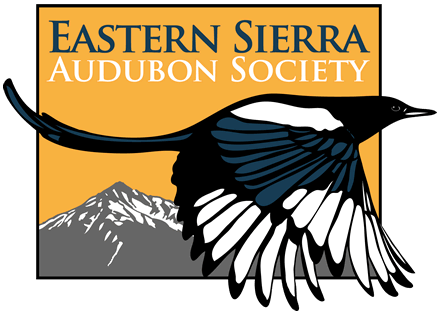Text and photos from National Audubon Society IBA Database Site Profile
Sierra Meadows – Southern Site Description
From just north of Yosemite National Park and south to Tulare Co., the Sierra Nevada contains some of the most critical bird habitat in its meadows, and most of these are centered at middle elevations (4500′ 7000′), and vary in terms of habitat quality. The main factors include the health of willow thickets, the intensity of grazing and the amount of water near the surface. During the late 1990s, Institute for Bird Populations conducted a survey of avian use of 208 meadows in the Central and Southern Sierra in an attempt to document their importance to Sierran birds and to develop a ranking of meadows for inclusion in the California IBA program (Wilkerson and Siegel 2001). The study focused on birds that breed in meadows, those that establish territories preferentially near meadows and those that utilize meadows as post-breeding habitat.
Many of these meadows are within Yosemite and Sequoia/Kings Canyon National Parks or National Forests. There are too many individual meadows to mention, but aggregations (clusters of three or more) from north to south include (unless noted, all are on USFS land):
- East of Pinecrest, Tuolumne Co. (incl. Bluff)
- Southeast of Wawona in Madera Co. (incl. Topping Cow Camp)
- Dinkey Creek Rd. east of Shaver Lake, Fresno Co. (incl. Poison)
- Patterson area, vic. Wishon Reservoir, Fresno Co. (incl. Hall and Ross)
- Giant Forest area within Sequoia/Kings Canyon National Park, Tulare Co. (incl. Circle and Crescent)
- Quaking Aspen area near Camp Nelson, Tulare Co. (incl. Hossack, Deep and Quaking Aspen)
- Redwood Meadows west of Johnsondale, Tulare Co. (incl. Long, Holey, Double Bunk)
Several other important single Sierra meadows include Zumwalt, Fresno Co. (Kings Canyon National Park); Lower Rock Creek Crossing, Inyo Co. (vic. Cottonwood Lakes southwest of Lone Pine) and over a dozen other highest priority meadows (per Wilkerson and Siegel 2001) scattered across the western half of Yosemite National Park and adjacent lands.
Conservation Issues
The diverse conservation issues facing each meadow depend largely on two factors – ownership and accessibility. Three main classes of ownership include USFS, wherein meadows are managed to support a mix of summer livestock grazing (cattle and sheep), logging, recreation and wildlife conservation in a broad sense; those managed by the National Park Service, which have seen extractive activities such as logging long banned, but often support heavy recreation use; and a handful of privately-held meadows (notably Ackerson Meadow/Camp Mather), generally operated as cattle pastures and woodlots for the owners. Threats to each depend on ownership, although summer grazing (USFS/private lands) may be the most damaging threat to the greatest number of meadow-dependent bird species by severely-reducing or eliminating willow thickets needed for nesting and foraging. The weight of cattle also alters the delicate hydrology of these meadows, and encourages streams to incise into gullies, thus desiccating the meadow. Recreational uses are most severe outside the national parks, where threats include campgrounds and picnic areas located within (rather than adjacent to) meadows and degradation by vehicles (incl. OHV use, unofficial parking lots). Human disturbance, predictably, is most pronounced in meadows near well-traveled roads. Logging continues to have local impacts, especially where it has removed large nesting trees, including dead or diseased individuals. An ungrazed, un-trampled meadow big enough to support a meadow avifauna is a rare sight indeed in this IBA, but even somewhat “disturbed” meadows have emerged as being extremely important to Sierran bird conservation.
Ornithological Summary
See Sierra Meadows Northern IBA. These meadows reach their highest species diversity in the Central Sierra (Yosemite to Sequoia National Park), and several Sierran species, including Great Gray Owl, Black-backed Woodpecker and Pine Grosbeak have not been recorded south of Sequoia National Park, even historically (B. Barnes, pers. comm.). In the far south, the Redwood Meadows area of Tulare Co. is apparently the southernmost regular site for such distinctive Sierran species as Blue Grouse, Pileated Woodpecker, Vaux’s Swift, Hammond’s Flycatcher and Winter Wren (with scattered potential sites farther south, e.g. Breckenridge Mtn., Kern Co.). The range of the Mount Pinos race of Blue Grouse (Dendragapus fuliginosus howardii) is apparently wholly contained within this IBA; its northerly contact zone with northerly taxa was placed at southeast Fresno Co. by Grinnell and Miller (1944), and it has not been confirmed south of the Greenhorn Mtns. in decades (Heindel 2001, BB).
Help us learn more about the birds at this IBA! Enter your birding data online at California eBird! (http://ebird.org/california/)
Click here for a bar chart of eBird observations in Southern Sierra Meadows


